Kraków 2020-04-07
Podlaska Wytwórnia Samolotów in Białej Podlaskiej.
Training aircraft.
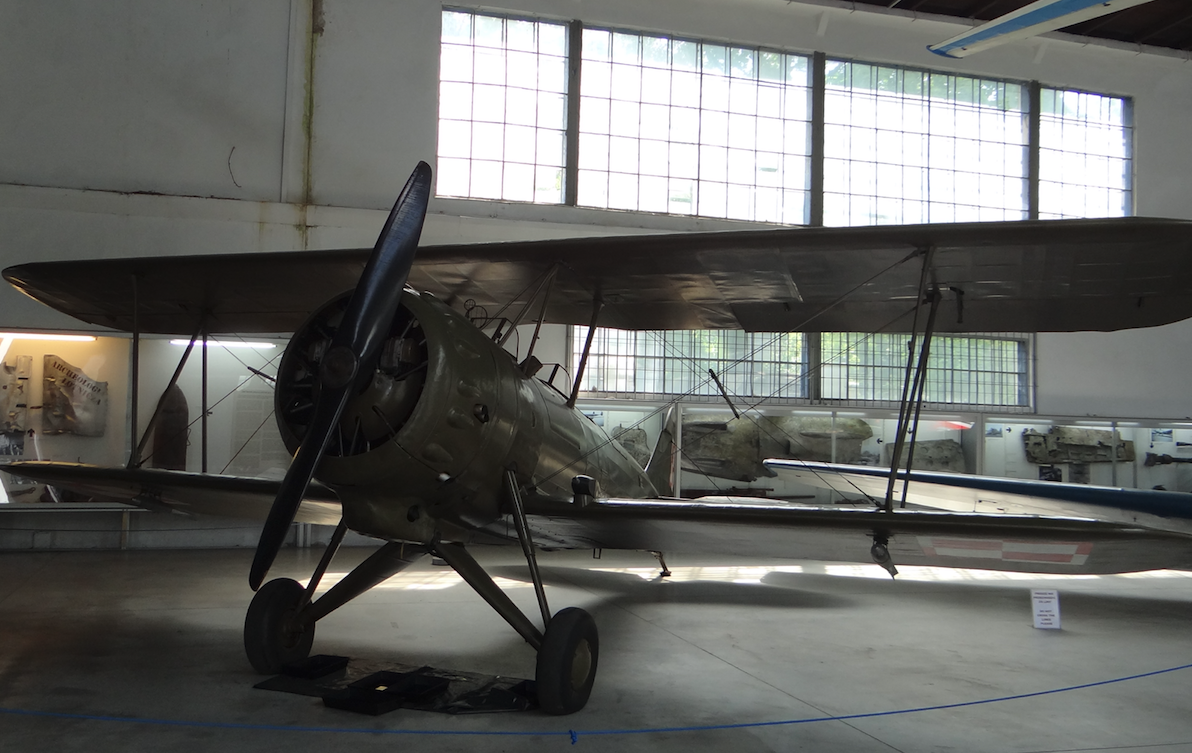
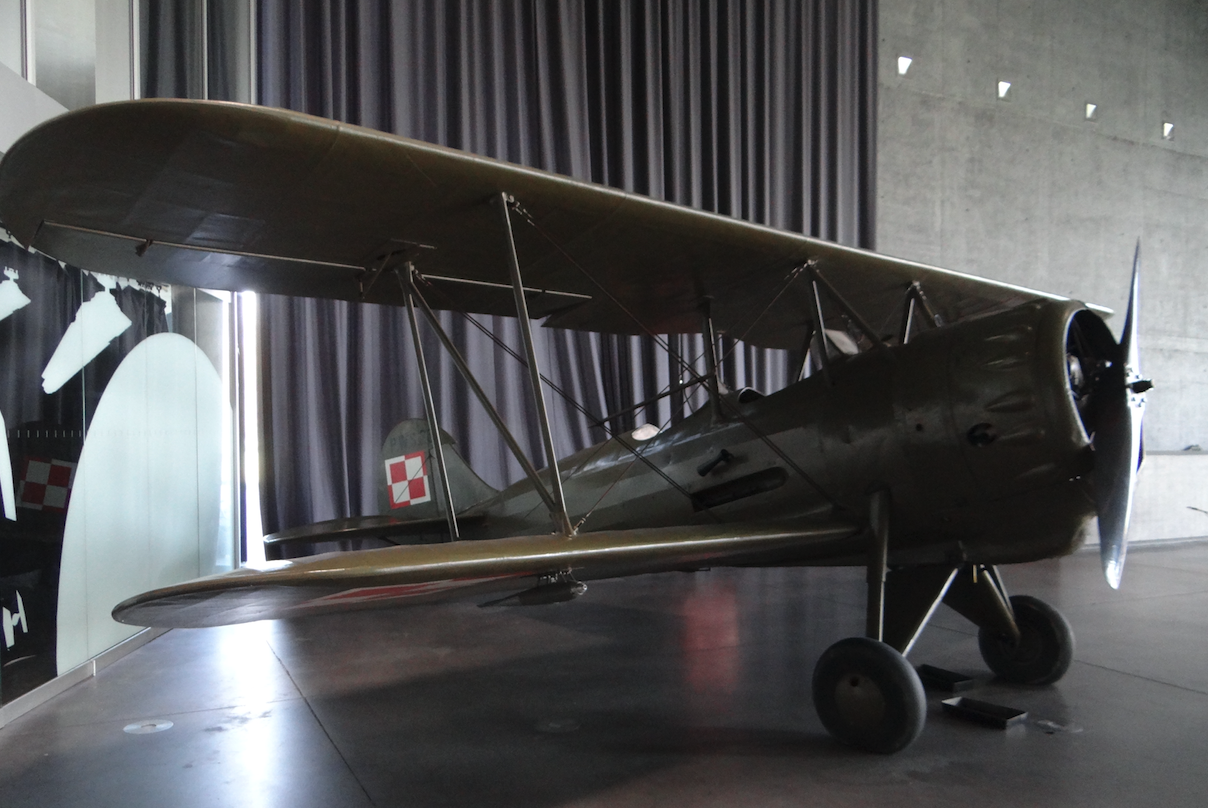
In addition to aircraft built under license, Podlasie Aircraft Factory has developed many of its own constructions. There were sport, fighter, line (destructive), bomber, passenger (transport) and training aircraft.
In January 1929, PWS employees set up an association to train and promote aviation. Pilot, sport and glider sections were created. The association was very dynamic for many years. Contributed to the popularization of the plant and its products. The association was the initiator and participant of many sports impressions. Although the factory airport was small, thanks to the association's activities it was known throughout Europe. The LOPiP section operated here. The association supported amateur builders and exchanged experiences with many such institutions in the country and abroad. The association operated until September 1, 1939.
School planes were needed for this type of operation. Not only for civil aviation, but also for military aviation.
In 1926, the first training aircraft was developed, which was designated PWS-2. The constructor was Zbysław Ciołkosz. Only one prototype was built that was not flown. The aircraft was created for the competition of the Institute of Aviation Technical Research (IBTL) in Warsaw.
PWS-11.
In 1929, a training and training plane was developed, which was designated PWS-11. The constructors were Aleksander Grzędzielski and August Bobek-Zdaniewski. Only one prototype was built, which was flown in November 1929.
The task of the aircraft was to be training and training pilots of the PWS-10 fighter aircraft, which was created one year earlier. The project was approved by the Aeronautics Department of the Ministry of Military Affairs (MSW), which concluded a contract for the construction of three aircraft. One for static tests and two for flight tests. The first flying prototype was flown in November 1929 by Franciszek Rutkowski. The plane was not very controllable. Attempts to improve steerability by changing the tail proved to be unsatisfactory.
Therefore, the third prototype (second volatile) was made as PWS-11 bis. The aircraft received an improved fuselage (elliptical instead of rectangular). The aircraft tail has been improved. The engine was covered with a Townend ring. The PWS-11 bis was flown in the spring of 1930. The aircraft had good maneuverability and maneuverability, and good piloting. But the military did not order serial aircraft. The only aircraft PWS-11 bis received registration SP-ADS. As an acrobatic plane, he participated in acrobatic shows in the country and abroad.
Construction PWS-11 bis. Single-seater, single-wing high-wing aircraft, type "Umbrella" with mixed construction. Wooden, double-girder wing with two struts connecting the flap to the hull. The truss hull front is covered with sheet metal and covered with canvas from the pilot's cabin. Two-legged chassis with rear tail skid. The drive was provided by a 9-cylinder, air-cooled, in-line Škoda-Wright Whirlwind 15B engine with 220 hp (162 kW). Two-blade propeller, wooden.
Data TT PWS-11 bis - Span 9.00 m, length 6.65 m, height 2.44 m, curb weight 666 kg, take-off weight 934 kg, maximum speed 210 km / h, climb speed 7.3 m / s, ceiling 4 950 m, range 630 km.
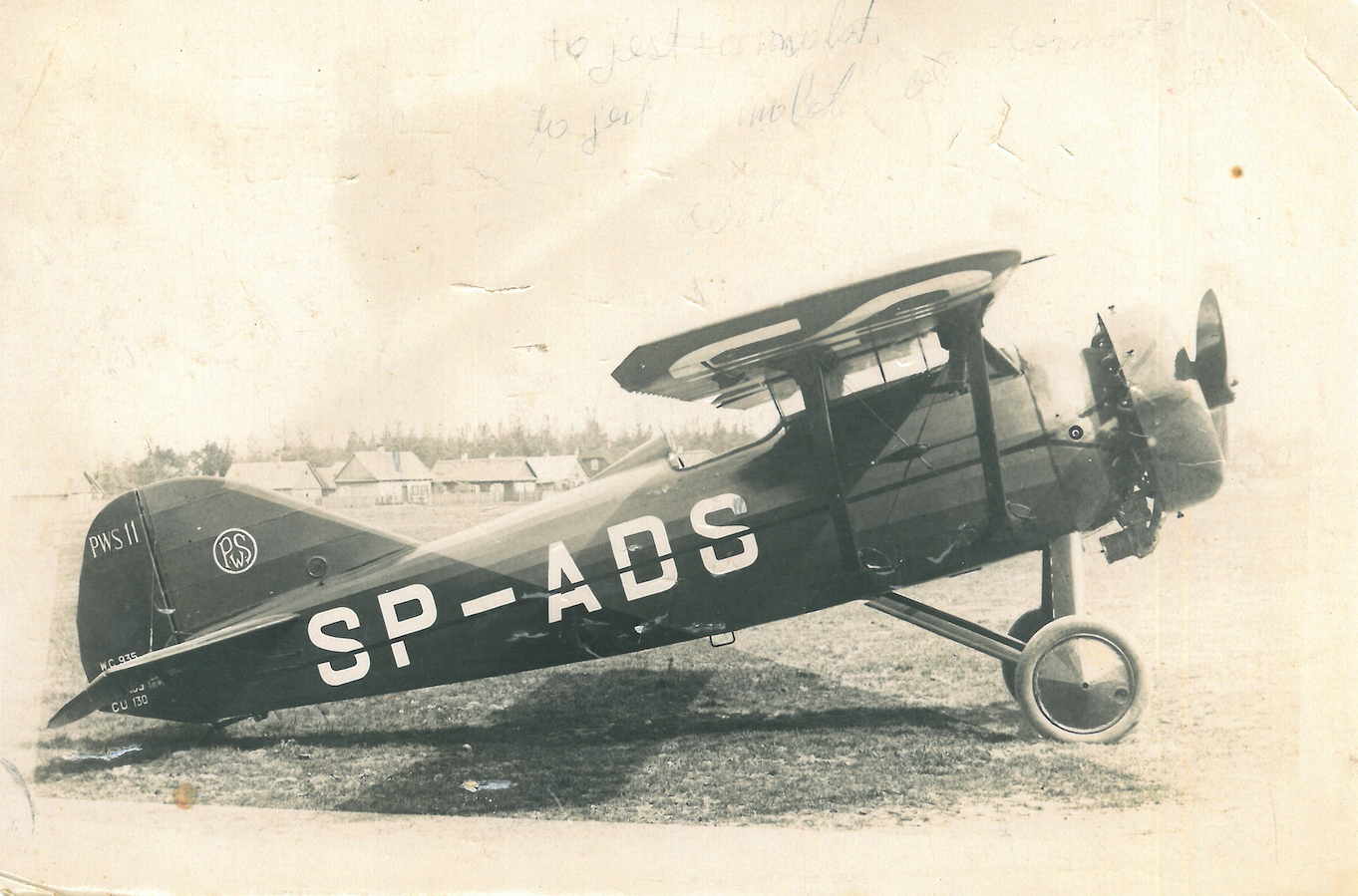
PWS-12, PWS-14.
Simultaneously with the PWS-11 aircraft, which was a "Parasol" monoplane, a biplane training and training aircraft was built at the PWS plant. The aircraft was intended for aerobatics. The works lasted from 1928. The aircraft was designated PWS-12. The constructors were Aleksander Grzędzielski and August Bobek-Zdaniewski. On February 25, 1929, the Aeronautics Department of the Ministry of Military Affairs concluded a contract with the PWS label. The plant was to build three prototypes (one static test, two for flights). Work on the PWS-12 moved quickly because many components were the same as in PWS-11. In October 1929, the construction of these prototypes was completed, and this month one of them underwent static tests, while the other was flown in November 1929, by factory pilot Franciszek Rutkowski.
The PWS-12 aircraft was not successful. He wasn't very fast, not very manoeuvrable and not very stable. That is why the prototype has been modified. The rectangular hull was profiled with slats to make it oval. The aircraft tail was rebuilt. The area of the wings has been increased. The engine was covered with a Townend ring. The modified aircraft was marked PWS-12a. The plane was flown again in March 1930.
The PWS-12a aircraft was submitted for testing to the Institute of Aviation Technical Research in Warsaw. The plane received a good opinion.
The PWS-12a aircraft was slightly modernized and its weight was reduced by 40 kg. The improved aircraft was marked PWS-12 bis and was overthrown on November 18, 1930. In 1931, the Polish Army ordered 20 PWS-12 bis aircraft for military aviation schools.
In 1933, the PWS-12 bis aircraft was modernized once again, and the new construction was designated PWS-14. The hull changed, which became a metal structure. The hull was made of steel pipes connected by welding. The fuselage cross section has been reduced in the rear. The fuel tank was moved from the wing to the fuselage and placed between the engine and the cabin. The aircraft received a changed fuel system, which enabled the flight in a reverse position, i.e. full acrobatics. The engine cover has been modified. Changes have also been made to the wings. Their construction was strengthened. The shuttlecocks are only placed on the top panel. The wings have wings placed on them, which relieve the forces at the controls. The PWS-14 aircraft was flown in June 1933. Tests on the plane were conducted by military pilots: Colonel pil. J. Kossowski, cf. pil. J. Orłowski and sergeant pil. S. Szubka. The flight tests of the PWS-14 aircraft were successful, which is why the Aeronautics Department decided that the PWS-12 bis aircraft still under construction should be made as PWS-14 aircraft. A total of 23 pieces of the PWS-12 and PWS-14 aircraft were produced. The aircraft went to schools in Dęblin and Grudziądz. Some of the PWS-12 and PWS-14 aircraft survived to 1939 and the defensive war.
In the years 1931–1933, cf. pil. J. Orłowski, on the PWS-12 bis aircraft performed numerous shows and flights, including taking part in the Balkan rally in April 1933. One PWS-12 bis plane, with the SP-AKE marks and the pilot Major J. Długoszewski flew to Estonia.
Construction PWS-12 and PWS-14 - The aircraft is a biplane, two-seater, of mixed construction. The cabins were uncovered. Drive 9-cylinder radial engine Škoda-Wright-Whirlwind J5A, 220 hp (162 kW). Two-blade wooden propeller from Szomański.
Data TT PWS-12 - span 9.00 m, length 6.78 m, height 2.70 m, bearing surface 25 m2, curb weight 728 kg, take-off weight 1 064 kg, maximum speed 180 km / h (PWS-14 - 190 km / h), cruising speed 160 km / h, landing speed 75 km / h, climb speed 4.5 m / s, ceiling 4 950 m, range 620 km.
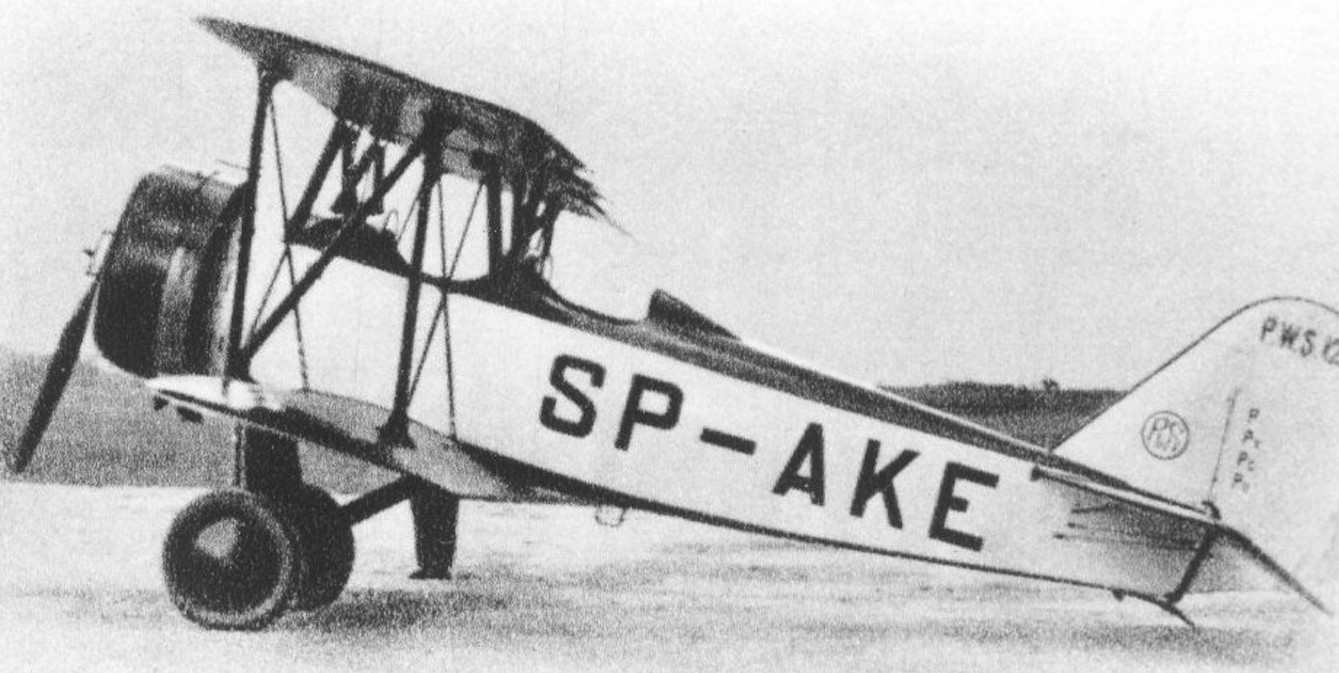
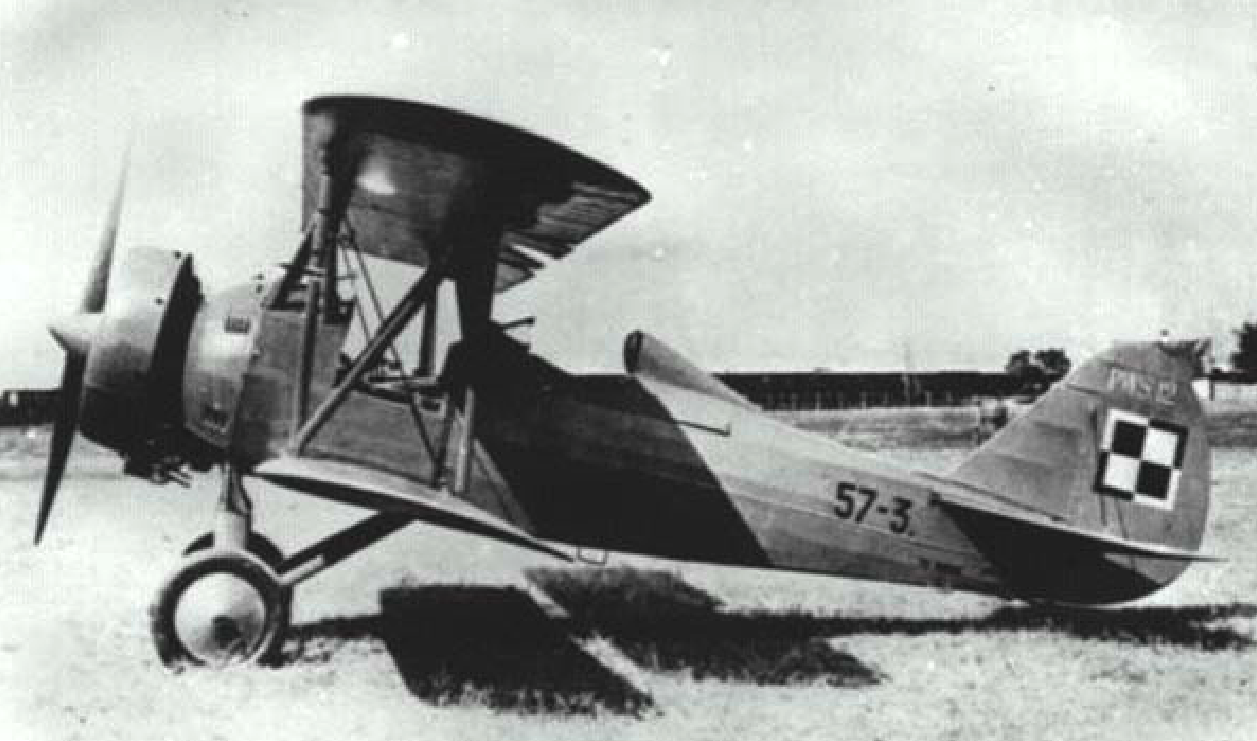
Bartel BM-4 h.
On September 12, 1929, in Wielkopolska Wytwórnia Planów - "Airplane" in Poznań, as a result of a short circuit in an electrical installation a fire broke out. The losses were huge and eventually in March 1931, the factory was closed. At the beginning of 1931, it was not the best at the PWS plant in Biała Podlaska. The situation was saved by the order of the Polish Army for another 70 Bartel BM-4b training and training machines, which were developed and built in Poznań. Production in Biała Podlaska began under license. Some engineers from Poznań moved to Biała Podlaska. Planes in the Bartel BM-4 h version, produced in 1931-1932. These aircraft went to aviation schools in Grudziądz and Dęblin.
In September 1932, PWS lost financial liquidity and declared bankruptcy. A receivership was established. The company was nationalized. Plant management changed. The design office was closed. To save the situation, other wood products were produced; sleds, tennis rackets and more.
RWD-8 pws.
The rescue plane for the PWS factory turned out to be the RWD-8 school aircraft, developed by the Experimental Repair Workshops in Warsaw. The designer was Stanisław Wigura. At the end of 1932, the aircraft documentation arrived at the plant. Production started in 1933. Therefore, the design office was reactivated. The RWD-8 aircraft was improved and produced as RWD-8 pws. In the period 1933-1938, a total of about 500 RWD-8 / pws machines were built. The first RWD-8 pws aircraft was flown in September 1934. 350 machines went to the Polish Army, and 150 machines to the Aero Clubs.
PWS-16.
In 1934, 20 PWS-16 machines and 20 improved PWS-16 bis machines were built on the basis of PWS-14. These aircraft replaced Bartel BM-4 used in the army.
The PWS-16 aircraft was a continuation of the PWS-14 design. The PWS-16 prototype was flown in December 1933. In the winter of 1933-1934, the aircraft underwent tests at the Institute of Aviation Technical Research in Warsaw. In 1934, Podlasie Aircraft Factory delivered 20 aircraft to the army. They received numbers from 59-02 to 59-21. The aircraft had the designation PWS-16a. The aircraft were handed over to the Polish Army.
In 1934, the aircraft was given a machine gun. Several elements were rebuilt on the PWS-16 aircraft. The engine has been changed. The outline of the tail has been changed. A major modification was the change to three-chassis chassis with shock absorbers supported to the sides of the hull. The prototype of this aircraft underwent tests at the Institute of Aviation Technical Research in the winter of 1934-1935. The aircraft was designated PWS-16 bis. In the years 1935-1936, 20 PWS-16 bis aircraft were built, numbers 59-22 to 59-40.
Interestingly, constructions PWS-12, PWS-14, PWS-16 were built as typically two-seater, but also as single-seater. They were then described as so-called "blinds", that is, without room for the instructor. These machines were perfect for higher piloting (aerobatics).
PWS-16 aircraft were used primarily in the army to learn how to shoot and bomb. They were popularly called "Sixteen". In 1937, when the Polish Army received newer PWS-26 aircraft, the PWS-16 aircraft were moved to supporting tasks: glider towing, liaison tasks, reconnaissance flights. A dozen or so planes were sold abroad. 5 machines went to Bulgaria, 20 aircraft went to Spain via Portugal. The last pieces were used in the defensive war of 1939. One of the copies of PWS-16 bis, as the last, due to lack of fuel and damage, was left by "SGO Polesie" from Kock on October 4, 1939.
Construction - The PWS-16 aircraft is a mixed biplane. Drive 9-cylinder star engine Škoda-Wright-Whirlwind J5B, 220 HP (162 kW). Two-blade wooden propeller from Szomański. PWS-16a aircraft had no armament. The PWS-16 bis, on the other hand, had a 7.7 mm Vickers model 33 machine gun and two 12.5 kg bombs.
Data T-T PWS-16. Span 9.00 m, length 6.90 m, height 2.80 m, carrying surface 25.0 m2, curb weight 840-860 kg, fuel supply 170 liters, maximum speed 190-205 km / h, climbing speed 4, 3 - 4.5 m / s, operating ceiling 4 500 m, range 550 km.
PWS-18.
In 1934, there was still no unanimity between the Polish Army and the Polish Aviation Industry on the topic of training aircraft. The Department of Aviation still claimed that better structures were being built in the West. Therefore, in 1934, Polish Military Aviation purchased a license for the British Avro 621 Tutor aircraft. It was assumed in advance that it is a better design than the Polish aircraft PWS-16. One copy of the Avro 621 Tutor aircraft was brought to Poland, which had metal wings. At the same time, similar wooden structure wings were imported.
The PWS factory was instructed to develop an aircraft based on Avro 621 Tutor, which would be adapted to Polish conditions. Antoni Uszacki became the head of the team of designers. After numerous consultations, it was decided to build wings with a wooden structure, the tips of which were rounded. The chassis was the structure of the Polish State Plant (PZL). Aircraft installations were rebuilt. The drive uses a 9-cylinder radial engine Škoda-Wright-Whirlwind J5B, 220 HP (162 kW), which was produced in Poland. The first flight took place in 1935.
The aircraft received the PWS-18 designation and was sent for serial production. When the new PWS-26 aircraft appeared, it was decided to stop the production of PWS-18 aircraft after building 40 units. Production lasted from 1935 to 1936. PWS-18 aircraft were directed to military schools, where they served until 1939.
The PWS-18 aircraft is a biplane training and training aircraft of mixed construction. The plane was unarmed.
Data T-T PWS-18. Span 10.97 m, length 8.02 m, height 2.92 m, carrying surface 29.20 m2, empty weight 900 kg, take-off weight 1 250 kg, maximum speed 196 km / h, landing speed 70 km / h, climbing speed 5.0 m / s, ceiling 4 950 m, range 465 km.
PWS-26.
The PWS-26 aircraft is one of the best 30-year training and training aircraft. The performance of the PWS-26 aircraft was very good. The plane is not only very manoeuvrable, but also forgave many mistakes for less experienced pilots.
PWS-26 is a continuation of the PWS-16 aircraft and is derived directly from the PWS-16 bis structure. No prototype was built, and the aircraft was created by rebuilding (modifying) one of the existing aircraft. We do not know the exact date of flight PWS-26. It is assumed autumn 1935.
In the spring of 1936, the PWS-26 aircraft was sent to Warsaw to the Institute of Aviation. The tests went very well. The aircraft turned out to be very manoeuvrable, with good piloting properties. It was suitable for acrobatics, learning to shoot and bombing from a dive flight. As a result, the Polish Army ordered as many as 400 copies of PWS-26.
In 1936, serial production of PWS-26 aircraft began. The aircraft was designated with the military type No. 81. The first 20 units were made by modifying the PWS-16 bis aircraft that were just being produced. Another 320 copies were built from the ground up. About 10 machines were built monthly. From Copy No. 81-182, the PWS-26 aircraft had a changed fuel system, improved brakes and other minor modifications. The airframe's price was PLN 47,000. The engine cost PLN 30,000. Production ceased in mid-1939 to free up production capacity for typical combat aircraft. The PWS-26 aircraft took second place, after RWD-8, in the number of the most-built Polish aircraft before World War II.
From 1936, PWS-26 aircraft began to be delivered to military aviation schools: Aviation Training Center No. 1 in Dęblin, No. 2 in Radom, to Ułęż Airport, University of Pilotage in Grudziądz, Aviation Training Center No. 2 in Krosno (1939) and to air regiments in Warsaw, Krakow, Lviv, Lida, Toruń, Vilnius and Poznań. Bulgarian pilots trained in Poland on PWS-26 aircraft. Bulgaria ordered PZL-43 aircraft, and flights on PWS-26 aircraft were part of the training.
During the defensive war, a lot of PWS-26 aircraft were destroyed by German and Russian forces on earth. This was due to the fact that PWS-26 aircraft were not subject to centering or moving to field airports.
The fight on the history of Polish Aviation took place on September 3, 1939, when lieutenant pilot Jan Falkowski from the Aviation Training Center (CWL) in Dęblin, during the evacuation flight by PWS-26 on the Dęblin-Lublin-Sokal route. In the vicinity of Lublin, he was attacked by three German Meserschmitts. Jan Falkowski reduced the flight altitude from 300 m just above the ground, scrubbing almost on trees and bushes. He made the most of the maneuverability of the PWS-26 aircraft. At that time, the enemy tried to shoot him down. One remembered in this fight so much that it crashed into the ground. After this fact, the others flew away, and Jan Falkowski arrived safely to Sokal. Jan Falkowski later participated in the Battle of Britain. He fought in Squadrons 315 and 303.
Some of the PWS-26 aircraft were used as connecting and reconnaissance planes, and even bomber planes using hand grenades. In the Franciszek Kleeberg Independent Operational Group "Polesie", the PWS-26 aircraft flew until October 4, 1939. A dozen machines were evacuated to Latvia and another dozen to Romania. German soldiers took over the destroyed machines. They renovated them at the Heinkel plant in Mielec and sold it to Romania. There were about 30-50 aircraft. Deliveries to Romania lasted in the years 1940-1942. One machine was put up by the Germans in the museum of technology and communication in Berlin, where it was presented until 1944. This copy was found in the summer of 1945 in Greater Poland near the town of Czarnków. The aircraft was renovated in Poznan, registration SP-AJB was given and used in the Aeroclub in Poznań from 1949 to 1953. Then the plane was handed over to the museum in Krakow, where it is still present. He has No. 81-123.
During the war, the Russians took over a dozen PWS-26 aircraft. They used them until June 22, 1941, when the brothers - Russians and Germans caught their heads. Romania has admitted to having 56 PWS-26 machines. She used them to train pilots. In 1944, in Romania, planes were used to fight on the front, but not in clear circumstances: against the Russians or Germany? The unit consisting of 12 PWS-26 aircraft was named "Eskadra-PWS".
PWS-26 aircraft were used in Poland, Latvia and Romania. During World War II, German and Soviet troops also used aircraft.
PWS Z-47 „Sęp III”.
In 1936, the designer August Bobek-Zdaniewski designed interesting planes. The first was the design of the PWS Z-17 fighter "Sęp I", which was to have wings with a strong negative bevel. At the same time, a second project was created, which was designated PWS Z-47 "Sęp III". It was a training and training aircraft project based on a fighter aircraft. No aircraft was built.
PWS Z-28 / PWS-28.
In 1937, the designer August Bobek-Zdaniewski, based on PWS-26, developed a single-seat version that was to be designed for training, i.e. the so-called "blind man". No aircraft was built.
PWS-33 „Wyżeł".
PWS-33 „Wyżeł” was a prototype of a training-training aircraft for pilots of twin-engine machines. PWS-33 Wyżeł was one of the best aircraft constructions in this class. The aircraft had a modern design. The aircraft was a low-wing aircraft with tandem seats. Visibility from the cabin was very good. The main purpose of the aircraft was to train pilots on multi-engine machines (Bomb Squadrons) and on-board shooters. The aircraft could also be an escort fighter aircraft.
The design of the PWS-33 aircraft was developed by Wacław Czerwiński in cooperation with eng. Zygmunt Jabłoński. In 1938, pilot Stanisław Szubka flew the first prototype of the machine. Already in December 1938, the aircraft was presented at the International Aviation Salon in Paris. The second copy was flown in January 1939. In 1939, preparation for serial production of this aircraft was being prepared.
During the defensive war, the first copy of PWS-33 "Wyżeł" was bombed at the factory, the second at the Technical Institute of Aviation, was taken over by the German army and exhibited at the Aviation Museum in Berlin, where it was presented until 1944.
PWS-33 Wyżeł has a mixed construction. It is mainly made of wood. Layout in the H. system. Twin-engine drive. 9-cylinder in-line engines PZInż. "Major 4B", 2 x 96 kW (2 x 130 HP). In-line engines, with hanging pistons, air-cooled.
Data T-T PWS-33 "Wyżeł". Span 9.26 m, length 6.94 m, height 2.56 m, carrying surface 12.70 m2, curb weight 950 kg, take-off weight 1,410 m, fuel 250 liters, maximum speed 315 km / h, landing speed 100 km / h, climbing speed 4.5 m / s, operating ceiling 4 500 m, maximum range 1 160 km.
Armament PWS-33 "Wyżeł". The prototype received one Model 36 7.9 mm machine gun, permanently mounted in the fuselage and operated by a pilot. Two wings for 2 x 12.5 kg bombs are installed under the wings.

The End.
In the mid-30-year period, the Biała Podlaska plant produced over 100 aircraft a year. 214 aircraft were built in two years; 170 - RWD-8 pws, 20 - PWS-16, 19 - PWS-16 bis, 5 - PWS-24 bis. In the next period, 1936 - 1938, 694 aircraft were built. Including; 330 - RWD-8 pws, 320 - PWS-26, 40 - PWS-18 and 2 prototypes PWS-33 and 2 prototypes PWS-35. At that time, the plant employed 1,200 employees.
On March 3, 1939, due to the tense international situation, the PWS plant was subordinated to PZL Wytwórnia Płatowców Nr-1. New technologies have been introduced to the plant. Until now, the plant built mixed constructions. Therefore, the plant received technologies for the construction of metal structures. The Department of Aviation of the Ministry of Military Affairs predicted the launch of the production of 100 PZL P.11g Kobuz aircraft in PWS.
By September 1, 1939, the PWS plant had built 1,506 aircraft in 43 variants and 31 gliders for 16 years. Nearly 100 aircraft per year. The main constructors were: S. Cywiński, Z. Ciołkosz, A. Grzędzielski and A. Zdaniewski.
In 1939, designers from the Podlasie Aircraft Factory were developing several interesting designs for sport, school, training and combat aircraft, but none of them was created in the form of a prototype and remained only on paper.
Opracował Karol Placha Hetman
Kraków 2020-04-07
Podlaska Wytwórnia Samolotów in Białej Podlaskiej.
Training aircraft.
Construction
PWS-11.
Construction PWS-11 bis. Single-seater, single-wing high-wing aircraft, type "Umbrella" with mixed construction. Wooden, double-girder wing with two struts connecting the flap to the hull. The truss hull front is covered with sheet metal and covered with canvas from the pilot's cabin. Two-legged chassis with rear tail skid. The drive was provided by a 9-cylinder, air-cooled, in-line Škoda-Wright Whirlwind 15B engine with 220 hp (162 kW). Two-blade propeller, wooden.
Data TT PWS-11 bis - Span 9.00 m, length 6.65 m, height 2.44 m, curb weight 666 kg, take-off weight 934 kg, maximum speed 210 km / h, climb speed 7.3 m / s, ceiling 4 950 m, range 630 km.
PWS-12, PWS-14.
Construction PWS-12 and PWS-14 - The aircraft is a biplane, two-seater, of mixed construction. The cabins were uncovered. Drive 9-cylinder radial engine Škoda-Wright-Whirlwind J5A, 220 hp (162 kW). Two-blade wooden propeller from Szomański.
Data TT PWS-12 - span 9.00 m, length 6.78 m, height 2.70 m, bearing surface 25 m2, curb weight 728 kg, take-off weight 1 064 kg, maximum speed 180 km / h (PWS-14 - 190 km / h), cruising speed 160 km / h, landing speed 75 km / h, climb speed 4.5 m / s, ceiling 4 950 m, range 620 km.
PWS-16.
Construction - The PWS-16 aircraft is a mixed biplane. Drive 9-cylinder star engine Škoda-Wright-Whirlwind J5B, 220 HP (162 kW). Two-blade wooden propeller from Szomański. PWS-16a aircraft had no armament. The PWS-16 bis, on the other hand, had a 7.7 mm Vickers model 33 machine gun and two 12.5 kg bombs.
Data T-T PWS-16. Span 9.00 m, length 6.90 m, height 2.80 m, carrying surface 25.0 m2, curb weight 840-860 kg, fuel supply 170 liters, maximum speed 190-205 km / h, climbing speed 4, 3 - 4.5 m / s, operating ceiling 4 500 m, range 550 km.
PWS-18.
The PWS-18 aircraft is a biplane training and training aircraft of mixed construction. The plane was unarmed.
Data T-T PWS-18. Span 10.97 m, length 8.02 m, height 2.92 m, carrying surface 29.20 m2, empty weight 900 kg, take-off weight 1 250 kg, maximum speed 196 km / h, landing speed 70 km / h, climbing speed 5.0 m / s, ceiling 4 950 m, range 465 km.
PWS-26.
PWS-26 is a two-seater training and training aircraft. Mixed construction biplane.
Double-wing wooden, double-girder wings, covered with canvas and plywood. Plates stiffened with steel tube struts and tie rods. Upper Sunday lobe. Lower two-piece panel. Shuttlecocks made of metal tube with a wooden structure, covered with canvas.
The fuselage has a metal structure, in the form of a truss, made of steel pipes, additionally reinforced with tie rods. Tubes covered with profiled wood. The cover was made of canvas. The engine was covered with aluminum sheet. A window was made in the bottom of the hull that assisted in bombing and reconnaissance. Crew cabins uncovered. Half-priced crew seats.
Classic wooden structure covered with canvas and plywood.
Fixed landing gear with tail skid. Main chassis fitted with brakes.
PWS-26 drive. 9-cylinder star engine Wright Whirlwind J5b, produced under license in Poland. Take-off power 240 HP (176 kW), constant power 220 HP (162 kW). Each cylinder had an individual exhaust. Wooden propeller, double blades, Szomański company. The fuel installation allowed for reverse flight (aerobatics).
Armament PWS-26. Polish designers anticipated the assembly of one Vickers E machine gun or the Polish PWU KF WZ.33 cal. 7.92 mm. The rifle is equipped with a synchronizer for firing through a propeller wheel (rotating propeller shield). The machine gun was mounted on some aircraft. Installation of the machine gun in the second cabin was also planned as mobile. Some PWS-26 aircraft were equipped with two bomb ejectors, placed under the wings for two 12.5 kg bombs, designed to teach bombing. To evaluate the shooting, the plane could be equipped with one K-28 photo-rifle. It was placed in the lower left lobe.
Data T-T PWS-26. 1935. Span: 9.00 m, Length 7.03 m, Height: 2.87 m, Bearing surface: 25 m2, Curb weight: 852-885 kg, Total weight: 1170 kg, Max weight: 1240 kg, Load weight with crew : 255-355 kg, Max speed: 201 km / h, Cruising speed: 170-180 km / h, Climbing speed: 4.1 m / s, Landing speed: 78 km / h, Max range: 460 km, Ceiling: 4,200 m. The PWS-26 aircraft on the 3,000 m ceiling soared for 19 minutes.
PWS-33 „Wyżeł”.
Data T-T PWS-33 "Wyżeł". Span 9.26 m, length 6.94 m, height 2.56 m, carrying surface 12.70 m2, curb weight 950 kg, take-off weight 1,410 m, fuel 250 liters, maximum speed 315 km / h, landing speed 100 km / h, climbing speed 4.5 m / s, operating ceiling 4 500 m, maximum range 1 160 km.
Armament PWS-33 "Wyżeł". The prototype received one Model 36 7.9 mm machine gun, permanently mounted in the fuselage and operated by a pilot. Two wings for 2 x 12.5 kg bombs are installed under the wings.
Written by Karol Placha Hetman
Kraków 2020-04-07
Podlaska Wytwórnia Samolotów in Białej Podlaskiej.
Training aircraft.
Tally
PWS-11.
Three prototypes were built. First for static tests. Two for flight tests: one PWS-11, the other PWS-11 bis.
PWS-12, PWS-14.
PWS-12 aircraft: one for static tests, two for flight tests. The second prototype was modified to the PWS-12a version. The PWS-12a aircraft was submitted for testing to the Institute of Aviation Technical Research in Warsaw. The plane received a good opinion.
Aircraft PWS-12 bis. It was overthrown on November 18, 1930. In 1931, the Polish Army ordered 20 PWS-12 bis aircraft for military aviation schools.
In 1933, the PWS-12 bis aircraft was modernized again, and the new design was designated PWS-14, type 57. A total of 23 pieces of the PWS-12 and PWS-14 aircraft were produced.
Bartel BM-4 h.
Bartel BM-4 h - 70 aircraft were built at PWS.
RWD-8 pws.
In the period 1933-1938, a total of about 500 RWD-8 / pws machines were built at PWS. The first RWD-8 pws aircraft was flown in September 1934. 350 machines went to the Polish Army, and 150 machines to the Aero Clubs.
PWS-16.
In 1934, Podlasie Aircraft Factory delivered 20 copies of PWS-16 aircraft to the army. They received numbers from 59-02 to 59-21. The aircraft had the designation PWS-16a. The aircraft were handed over to the Polish Army.
In 1934, the aircraft was given a machine gun. The prototype of this aircraft underwent tests at the Institute of Aviation Technical Research in the winter of 1934-1935. The aircraft was designated PWS-16 bis. In the years 1935-1936, 20 PWS-16 bis aircraft were built with numbers 59-22 to 59-40.
PWS-18.
The PWS-18 aircraft was built with 40 machines.
PWS-26.
The PWS-26, typ 81, aircraft was built in 380 machines.
PWS-33 "Wyżeł".
PWS-33 aircraft. Two prototypes were built.
Written by Karol Placha Hetman
